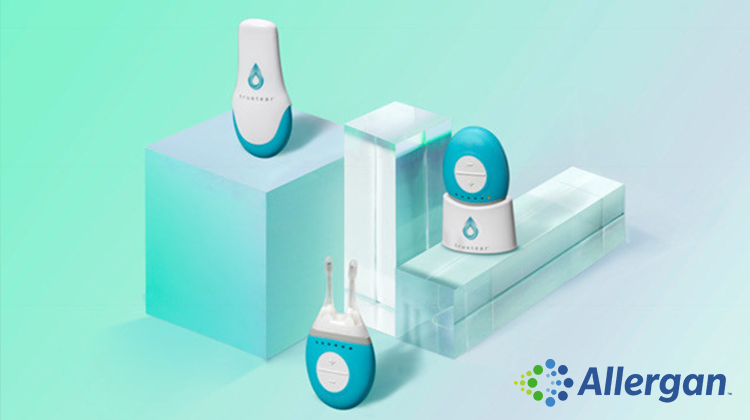Allergan’s Hands-Off Oculeve Acquisition Pays Off

Stanford start-up Oculeve’s fairy tale story finally has a happy ending penned – at least in part – by its acquirer Allergan.
On April 25th, Allergan announced that the FDA had granted market authorization for its TrueTear™ Intranasal Tear Neurostimulator, the innovative Dry Eye device invented by a team of students at Stanford’s famed Biodesign program.
Allergan and Oculeve will be honored at the 2017 Ophthalmology Innovation Summit prior to the annual meeting of the American Society of Cataract and Refractive Surgery in Los Angeles.
Allergan bought the start-up in 2015 after Oculeve had secured Series A and B backing from Kleiner Perkins Caufield and Byers, New Enterprise Associates, and Versant Ventures. The company – led by CEO and co-founder Michael Ackermann – had Series C financing lined up but opted to accept Allergan’s sudden acquisition offer instead.
The innovation behind the TrueTear device – which stimulates the tear-producing lacrimal gland with a two-pronged probe inserted in the nostril – belongs to the Oculeve team.
But Allergan’s management of the integration deserves praise as well. The global giant – already a leader in dry eye with Restasis – left the inventive, but relatively inexperienced, management team at Oculeve to carry the device from concept to commercial stage.
In an interview with OIS prior to the news of the FDA approval, Brent Saunders, CEO, chairman, and president of Allergan, said Oculeve fit nicely into Allergan’s ophthalmology portfolio, but while he had experience with “electroceutical” devices in the past, Allergan itself had limited expertise in developing a neural stimulator.
“Our goal was not to disrupt the work that Michael and his team at Oculeve were doing but to essentially plug them into Allergan and not integrate them into Allergan,” Saunders explained. “So that is exactly what we did. We left them exactly where they were, doing exactly what they were doing so well, and then told them they could draw on the expertise of people inside Allergan that understood clinical trials, understood FDA, understood regulatory affairs, understood the dry eye condition, that had various diagnostic capabilities that could become available to the Oculeve team, but it was their choice whether to engage with the broader Allergan.
“Ultimately they did and I think they found it incredibly beneficial,” Saunders added. “It worked out incredibly well for both the legacy Allergan and the Oculeve team. We let that happen at its own pace versus pushing it on them. And I think it was the right move to do and I think it was a great win-win situation for both teams. And it’s still running that way today.”
In an interview with OIS earlier this month, Ackermann, who serves as vice president of neurostimulation at Allergan from Oculeve’s former offices in South San Francisco, agreed on the smoothness of the transition.
“Life since the Allergan acquisition has been great,” he says. “You hear a lot of horror stories about acquisitions that don’t go well. This is not one of them. There has been a tremendous amount of value add. One of the things that has been really fun for me partnering with really brilliant clinical scientific minds at Allergan. This device does far more than we ever thought it would. There [will be] some great data presented at ARVO talking about what is happening at the cellular level and the tear film level that really came from the great minds at Allergan [including] Michelle Senchyna [Executive Director, Clinical Development: Ophthalmology], Mark Holdbrook [Executive Director, Clinical Affairs] and from a commercial perspective the eye care marketing and sales team. It’s been incredible. There are great minds that added so much value to this. Manufacturing is getting spooled up and we’re nearly ready to go.”
Saunders didn’t want to look too far ahead when asked if the Oculeve team will serve as a foundation for future neurostimulation devices.
“Obviously you have to walk before you run, and we’re so committed to bringing TrueTear to market, but also continuing to study the affect of the TrueTear device on the eye and the tear film,” he stressed. With approval in hand, Allergan will continue to conduct studies to really understand the benefits and the risks associates with the TrueTear device. “We’re very excited about it and very committed to it,” Saunders said. “I hope it leads us to continuing to explore electroceuticals or neural stimulators.”

